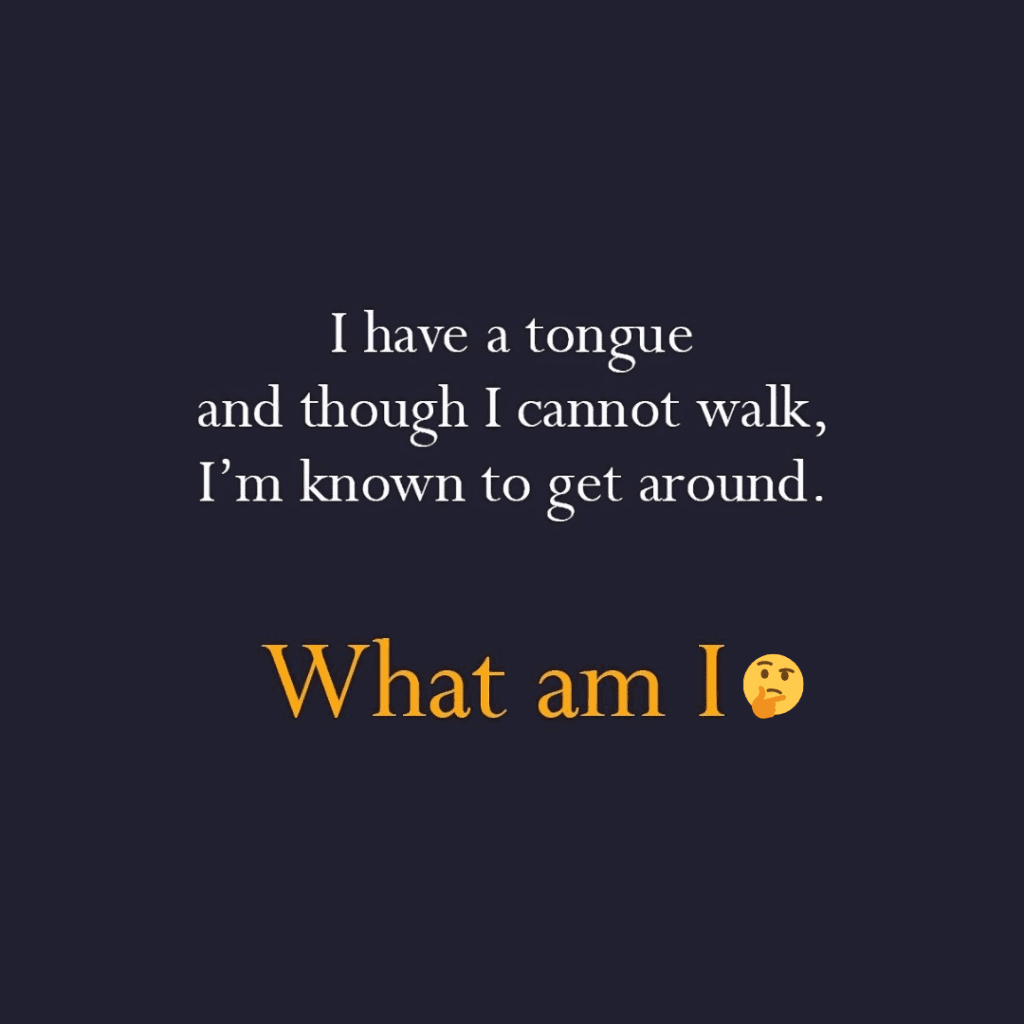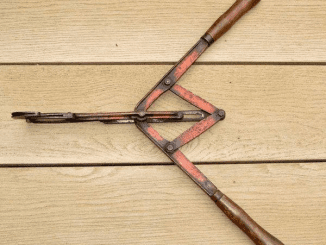Riddles are not just child’s play; they’re a fantastic way for anyone, young or old, to engage in critical thinking, spark creativity, and stretch those mental muscles. Today, we’re diving into a classic riddle that is sure to stump even the sharpest minds. Here’s the riddle:
“I have a tongue, though I cannot walk, I’m known to get around.”
Take a moment to think about it. Do you have an answer in mind? If not, don’t worry; we’re about to break it down and uncover the hidden answer. Let’s dive in!

Dissecting the Clues: Step-by-Step Breakdown
Riddles often play with language, leading us to think in one direction while the true answer sits just out of sight. This particular riddle is a perfect example of that clever misdirection. The first reaction most people have is to think of something living because it mentions a “tongue.” But riddles are notorious for using words with multiple meanings. Let’s analyze each line carefully to find the answer.
Clue #1: “I have a tongue”
Right off the bat, most of us think of humans or animals when we hear the word “tongue.” After all, a tongue is typically associated with speaking, tasting, and eating. But here’s where the riddle begins its play on words. Did you know that there are many objects that have “tongues” too?
One example is a shoe. The part of the shoe that sits underneath the laces is actually called a “tongue.” Another possibility could be a belt buckle, which has a tongue that slips through the holes in the belt to keep it fastened. So right away, we should keep an open mind about what this “tongue” might actually be referring to.
Clue #2: “Though I cannot walk”
This line eliminates any living creatures from the equation, since whatever this “thing” is, it doesn’t move on its own. In other words, it’s not a person, animal, or even a robot that has a tongue and can walk. We’re dealing with something that has a tongue but cannot move by itself.
A shoe fits this clue well, as it has a tongue but obviously cannot walk on its own. It needs someone to wear it in order to move.
Clue #3: “I’m known to get around”
This is the trickiest part of the riddle, but it provides a major hint. Although our mystery object can’t walk by itself, it’s still associated with movement. Shoes and belts fit perfectly here because they’re commonly associated with motion. Shoes move every time someone takes a step, and they literally help us “get around” by protecting our feet as we walk or run.
After analyzing all three clues, the answer to this riddle becomes quite clear. The answer is a shoe. It has a tongue, doesn’t walk on its own, but certainly gets around when someone wears it. Pretty clever, right?

The Value of Wordplay in Riddles
Riddles often involve wordplay, which is why they’re such a great exercise for the brain. Words can have literal and figurative meanings, and good riddles blur the lines between the two. Here’s a quick guide to help you approach riddles with similar wordplay:
- Think Beyond the Literal: Often, the words in a riddle aren’t meant to be taken at face value. Consider both literal and figurative meanings. Words like “tongue” could mean something outside of the human body.
- Don’t Jump to Conclusions: Riddles rely on our tendency to make quick assumptions. Instead, take a moment to consider if there might be an alternative interpretation.
- Visualize the Clues: Try to imagine the scene or object the riddle is describing. If it’s an object, picture its various parts and functions to see if it fits the description.
Tips for Tackling Tricky Riddles
Riddles can be tricky, especially those with layered meanings. Here are a few tips to help sharpen your riddle-solving skills:
- Break Down the Clues: Analyzing each part of the riddle separately can help you piece together the final answer. For example, “I have a tongue” gave us an initial image, but “Though I cannot walk” forced us to reconsider.
- Think Outside the Box: Most riddles require you to think in unconventional ways. The answer isn’t always the first thing that comes to mind. Look for alternate meanings, synonyms, and metaphors.
- Enjoy the Process: Riddles are meant to be fun, so don’t get too hung up if you can’t solve them right away. It’s all part of the challenge!
Conclusion: Keep Challenging Yourself with Riddles!
So, did you solve the riddle on your own, or did it take some extra thought? Riddles like these are a reminder that our initial impressions aren’t always correct. Sometimes, we need to look at things from a new perspective to uncover the answer.
Riddles are a wonderful way to challenge yourself, improve your mental agility, and have a bit of fun while you’re at it. Next time you’re with friends or family, try sharing a riddle like this one and see who can crack it first. And remember, with each riddle you solve, you’re keeping your brain sharp and engaged. Happy puzzling!


